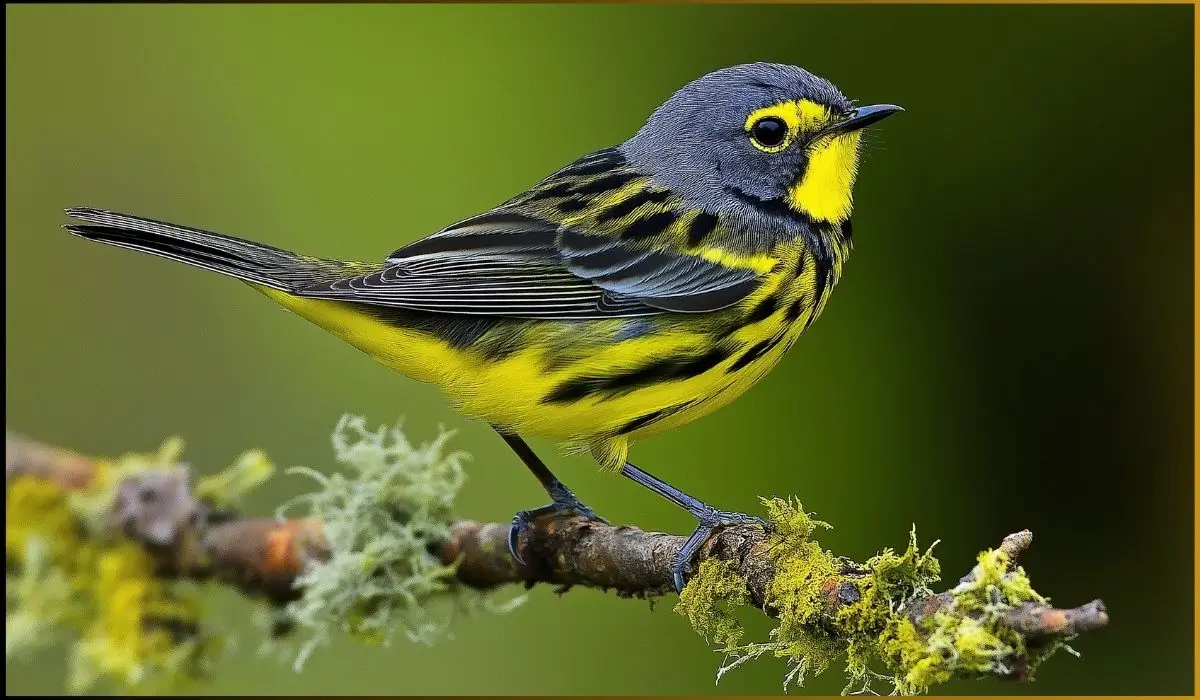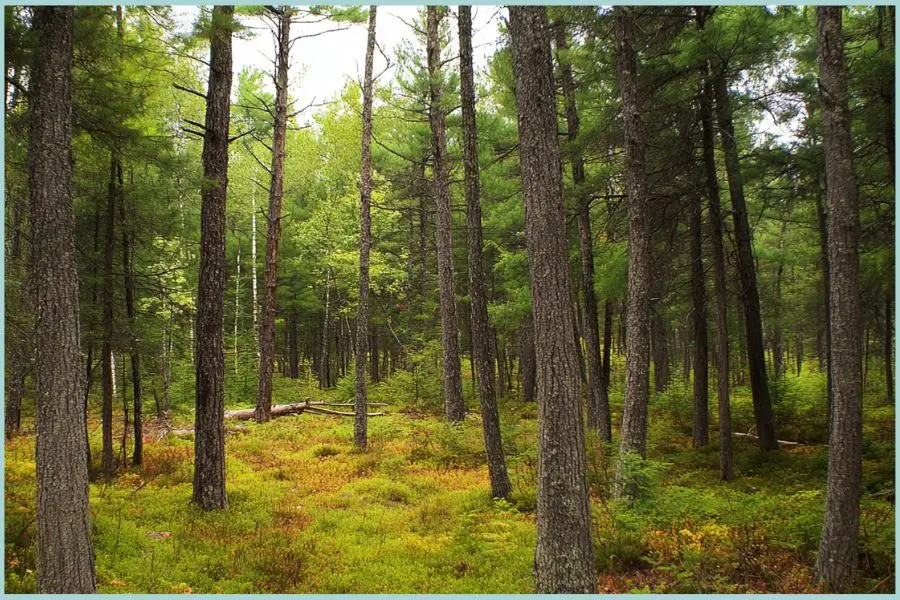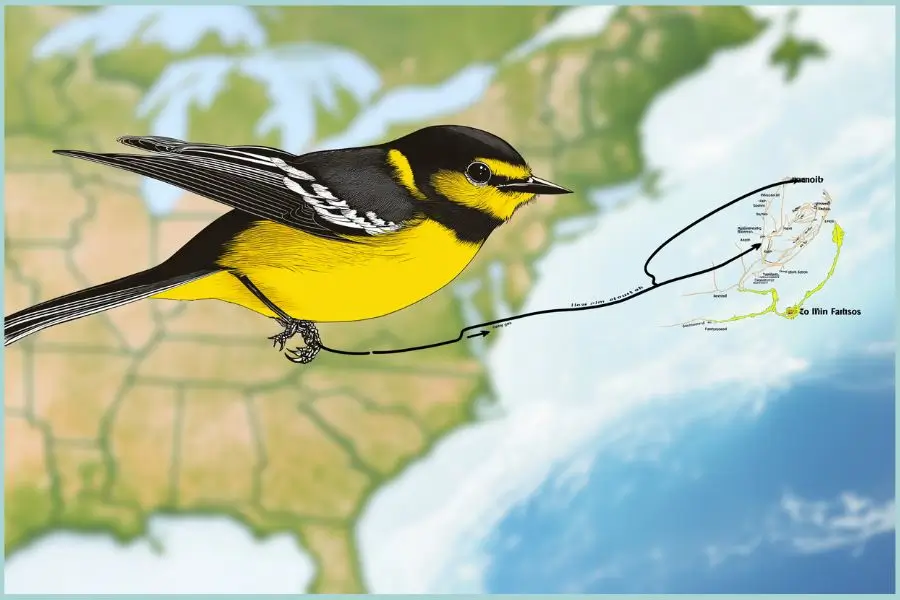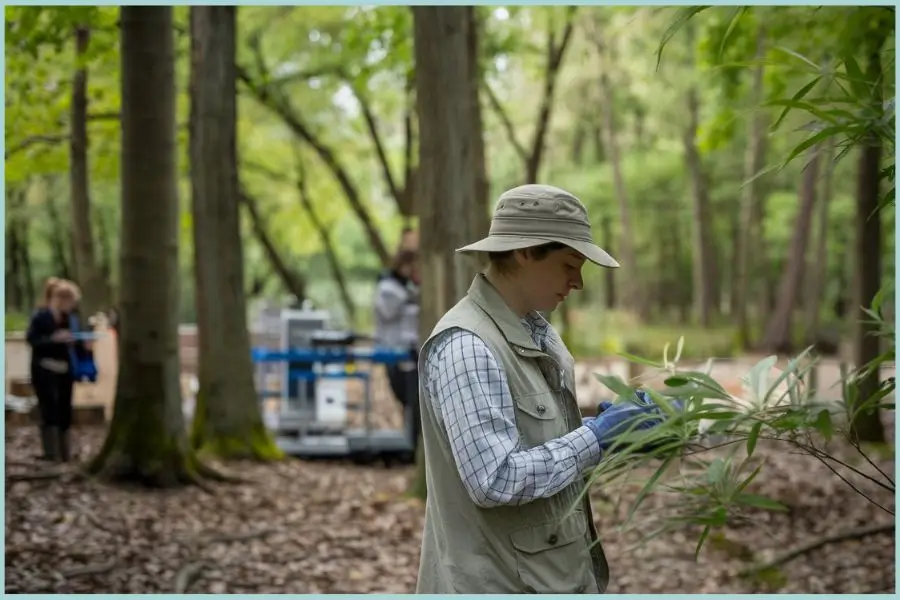
Michigan is a state located in the Great Lakes of the United States. Also Michigan is a kingdom for many different bird species.
Michigan has diverse landscapes, including forests, wetlands, and grasslands, which make it a haven for different bird species.
Among these various bird species, some are rare birds.
In this blog post, we will talk about what is the rare bird that is only found in Michigan.
A Bird that is Only Found in Michigan:

The Kirtland’s Warbler is a bird species that is only found in Michigan, specifically in the northern Lower Peninsula and the Upper Peninsula.
It is listed as an endangered species and has a limited breeding range, with most of its population nesting in young jack pine forests.
Now let’s dive deep into this bird’s physical characteristics, habitat, diet, population, and conservation efforts.
Related: What is the Bluish-Gray Bird in Michigan?
Population:
The Kirtland’s Warbler is one of the rarest bird species found in North America, with a population of fewer than 5,000 individuals.

This species of bird was listed as endangered in the IUCN list due to habitat loss, fire suppression, and hunting by a brown-headed cowbird.
Habitat: A Picky Resident of Jack Pine Forests

Kirtland’s Warblers are habitat specialists, preferring:
- Young jack pine forests
- Trees between 5-20 years old
- Sandy soil conditions
The Michigan Department of Natural Resources plays a crucial role in maintaining these specific forest conditions to support the warbler population.
Physical Characteristics

Kirtland’s Warblers are small but distinctive:
- Length: About 5.5 inches
- Weight: 12-16 grams
- Wingspan: 22 cm
Males feature:
- Gray upper parts with black streaks
- Lemon-yellow underparts
- Black mask and beak
Females have:
- More brownish upper parts
- Similar yellow underparts
Kirtland’s Warbler is smaller than an Eastern Bluebird. Males have gray with black streaks on the upper parts of their body and lemon-yellow lower parts.
Related: Blue Birds in Michigan
Diet and Migration
These warblers primarily feed on insects, including:
- Moths
- Flies
- Beetles
- Spiders

Despite being closely associated with Michigan, Kirtland’s Warblers are migratory:
- Breeding grounds: Primarily in Michigan
- Wintering grounds: Bahamas and nearby islands
This migration pattern highlights the importance of international conservation efforts.
Related: White Birds in Michigan
Conservation Success: A Bird Back from the Brink

The Kirtland’s Warbler’s journey is a testament to successful conservation:
- 1970s: Population dwindled to fewer than 200 birds
- 2019: Removed from the endangered species list
- Today: Population exceeds 4,000 individuals
The U.S. Fish & Wildlife Service has been instrumental in this recovery, implementing strategies such as:
- Prescribed burns to maintain young jack pine forests
- Cowbird control to reduce nest parasitism
- Habitat management and protection
Challenges and Future
Despite the success, challenges remain:
- Climate change impacts on habitat
- Continued need for active forest management
- Balancing conservation with economic interests
Researchers at Michigan State University continue to study the warbler’s ecology and conservation needs.
How You Can Help: Supporting Kirtland’s Warbler Conservation
Interested in contributing to Kirtland’s Warbler conservation? Here’s how:
- Support organizations like the Kirtland’s Warbler Alliance
- Participate in guided birding tours during breeding season
- Educate others about the importance of habitat conservation
- Consider volunteering for habitat management projects
Related: Doves in Michigan
Conclusion:
The Kirtland’s Warbler’s recovery is a conservation success story, showcasing the power of dedicated efforts and scientific management. As we continue to protect Michigan’s unique ecosystems, this rare bird serves as a symbol of hope and a reminder of the state’s rich biodiversity.

